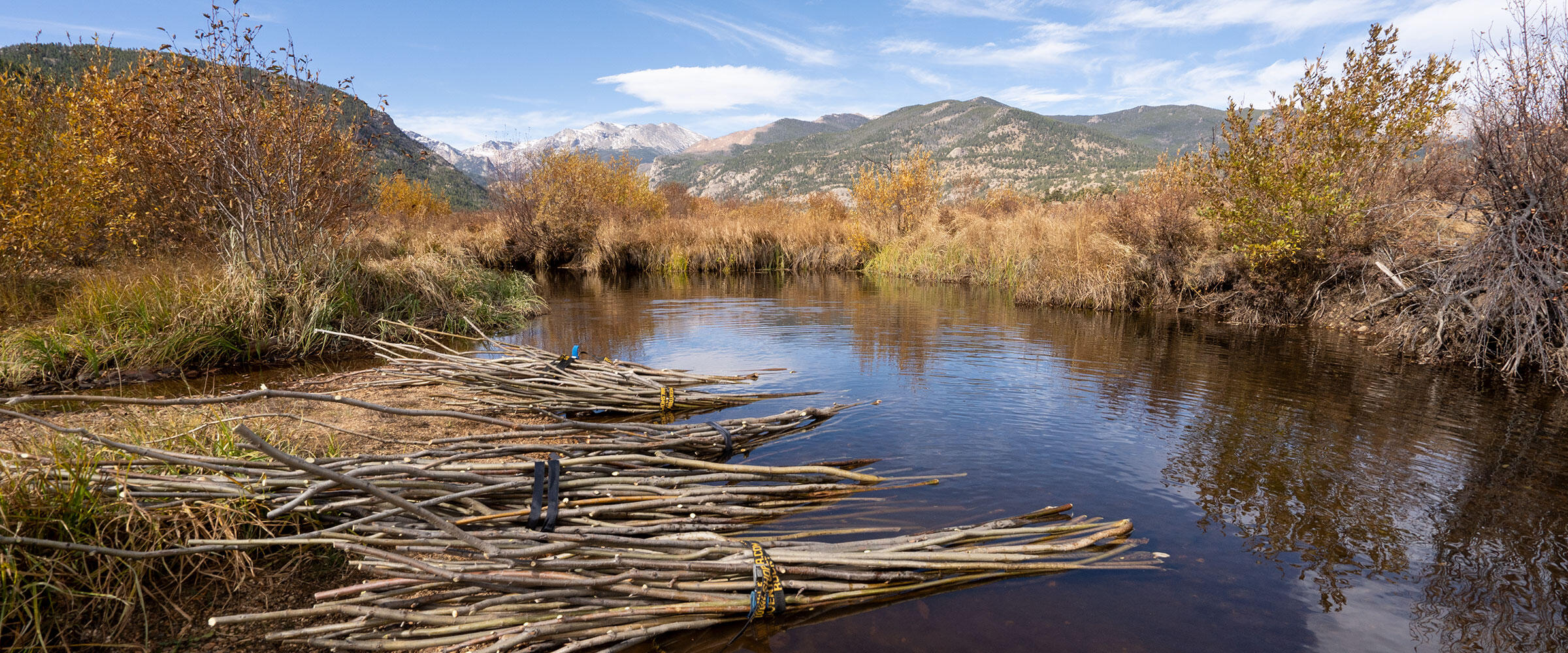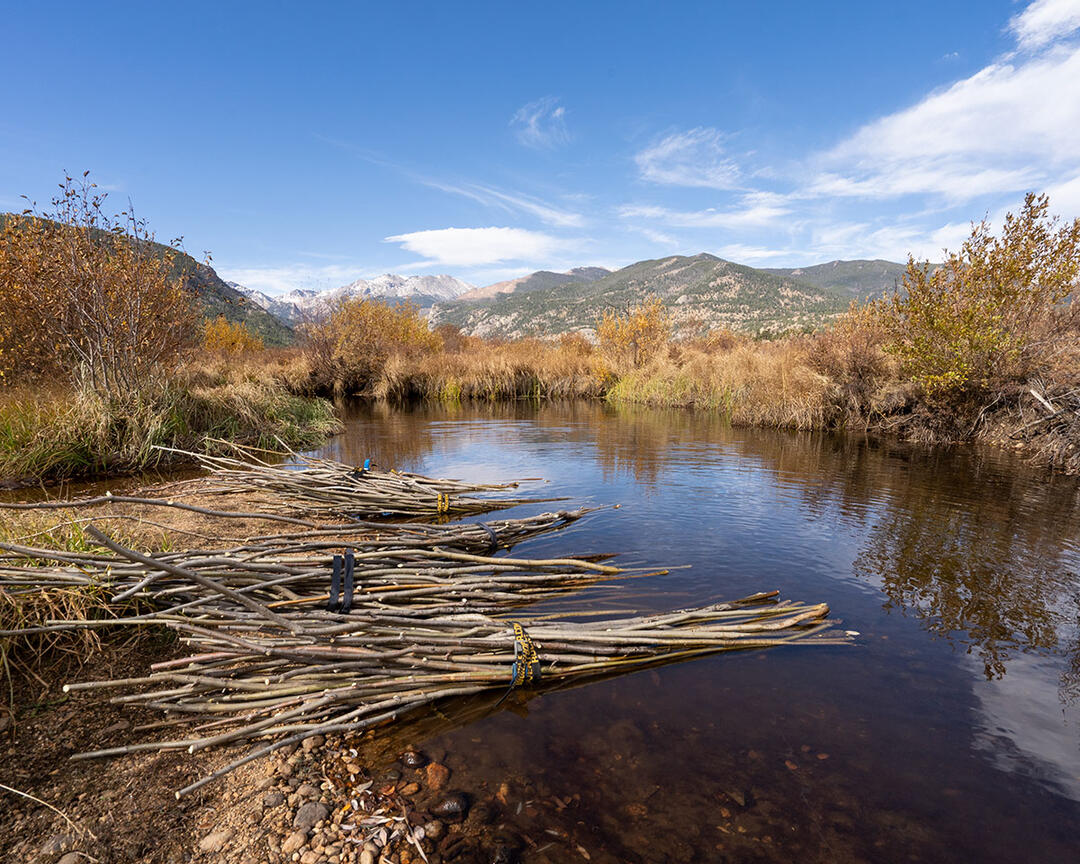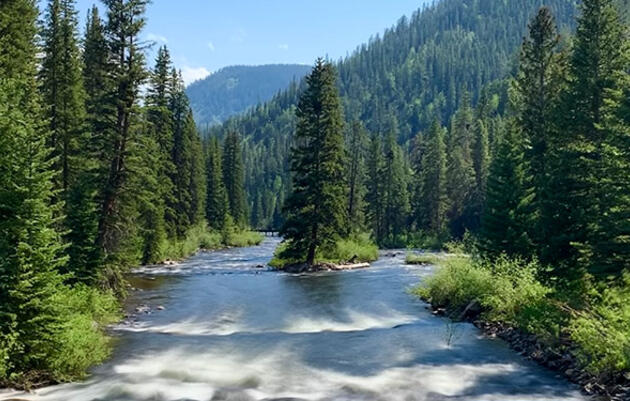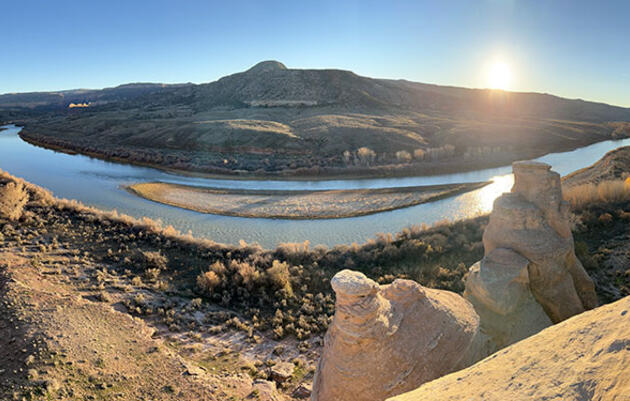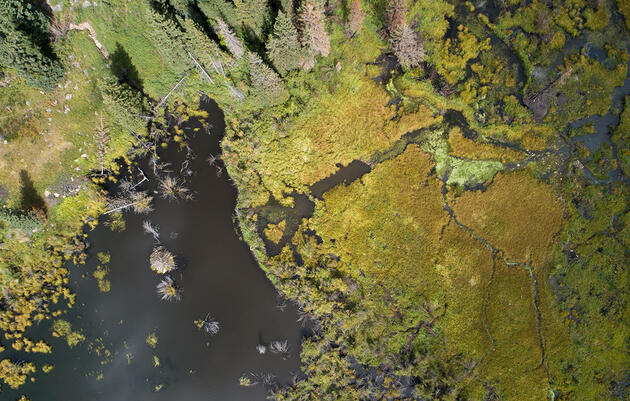Audubon and the Colorado Department of Natural Resources (DNR) have partnered to host a webinar series on important stream restoration legislation. The DNR-led stream restoration legislation is expected to be introduced mid- to late March and will provide clarity on where stream restoration projects can occur without being subject to enforcement actions.
Part two of the series showed substantial interest, with more than 130 live participants, including legislators, staff/aids, and interested stakeholders. The roster of expert panelists included Senator Cleave Simpson, Assistant Director of Water Policy for Colorado’s Department of Natural Resources Kelly Romero-Heaney, Watershed Program Director for the Colorado Water Conservation Board Chris Sturm, Senior Engineer and Fluvial Geomorphologist for Watershed Science and Design Katie Jagt, and was facilitated by Abby Burk, Western Rivers Regional Program Manager for Audubon Rockies. Here’s a recap of the discussion and what you need to know to support Colorado’s streams and riverscapes. A recording of the webinar is included at the bottom of this page.
Healthy streams and riverscapes are beneficial to us all. They provide a suite of multifaceted benefits that all Coloradans depend upon. Unfortunately, the majority of our streams have been degraded by more than two centuries of hydrologic modification, agricultural land use practices, roads and development, channelization, mining, and climate-driven disasters. The good news is that case studies of Colorado and other Western states’ stream restoration projects have proven successful at improving human and environmental health and reducing vulnerability to fire, flood, and drought. However, existing Colorado water governance creates substantial uncertainty and even barriers to restoring the valuable natural processes of streams.
Under the direction of Governor Polis, the DNR and associated experts drafted a legislative solution to this challenge. As with many water law issues, there is a need to provide clarity, which is what the legislation will do by setting forth where stream restoration can take place (in the historic footprint of the stream riparian corridor), without being subject to water administration.
Senator Cleave Simpson (3:18), a fourth-generation farmer and rancher in the San Luis Valley, kick-started the event by discussing the significant value of healthy rivers to all water users. He reflected on the notable engagement regarding this policy from decision makers and stakeholders, and expressed his hope for positive outcomes for all.
Kelly Romero-Heaney (8:23) discussed elements of the administrative process associated with water rights and how it relates to stream restoration projects. She concluded by saying,
“...the challenge before the DNR, the Colorado General Assembly, and the water community is to consider the balance between stream restoration’s large-scale benefits relative to the potential small-scale risk to water rights, and certainly the disproportionate cost and effort of acquiring a water right for a stream restoration project, and the potential inability to even secure that.”
Chris Sturm (17:13) gave an overview of what constitutes a healthy watershed and the many ways in which he and the Colorado Water Conservation Board (CWCB) are working to improve Colorado’s watersheds. In the last 15 years, the CWCB has invested nearly $150 million into their watershed restoration program toward projects that restore our waterways, protect our hydrographs, and help build resilience. This includes two key efforts. The Wildfire Ready Watersheds program assesses the susceptibility of Colorado’s water resources, communities, and critical infrastructure to post-wildfire impacts. The Wildfire Ready Action Plan provides a framework for communities to plan and implement mitigation strategies to minimize wildfire impact—before fires occur.
There have been questions from stakeholders regarding the scalability of stream restoration projects in Colorado and the extent to which they occur. Abby Burk (32:42) provided an overview of research from Matt Lindburg—the Brown and Caldwell contractor for the Basin Implementation Plan and Colorado Water Plan update—regarding stream restoration in the 2022 Basin Implementation Plans (BIPs) and 2023 Colorado Water Plan. To briefly recap, more than 110 projects were identified within restoration work, totaling well over $110 million. Nearly all of the BIPs listed multiple projects that planned for or implemented projects that improved and restored watersheds, streams, and habitats. All of the BIPs had goals that seek to protect, enhance, or restore environmental and recreational attributes.

Katie Jagt (36:09) led the audience through the many ways in which we all depend on rivers and streams. She explained the many uses of river restoration as a management tool—from supporting outdoor recreation, communities, and local economies; to protecting land and returning it to agriculture; to mitigating and responding to catastrophic events. She concluded by elevating the importance of community values in river restoration:
“…river restoration is not done without community involvement, and is done almost purely for the expression of the values of the community and the river. These projects are done voluntarily and with community support.”
Healthy riverscapes contribute to healthy forest systems, provide habitat for birds and wildlife, improve water supplies and forage for agriculture, and offer clean and reliable drinking water. Please join us in supporting our streams to ensure they can be restored to their natural function. A third installment of the series will be held in April and will focus on example restoration projects. Registration and further details will be released in the coming weeks.
Colorado’s Proposed Stream Restoration Legislation, Part 2 recording
For specific stream restoration bill inquiries, please contact Kelly Romero-Heaney or Daphne Gervais. Any further questions about the need and benefits of stream restoration can be sent to Abby Burk.

